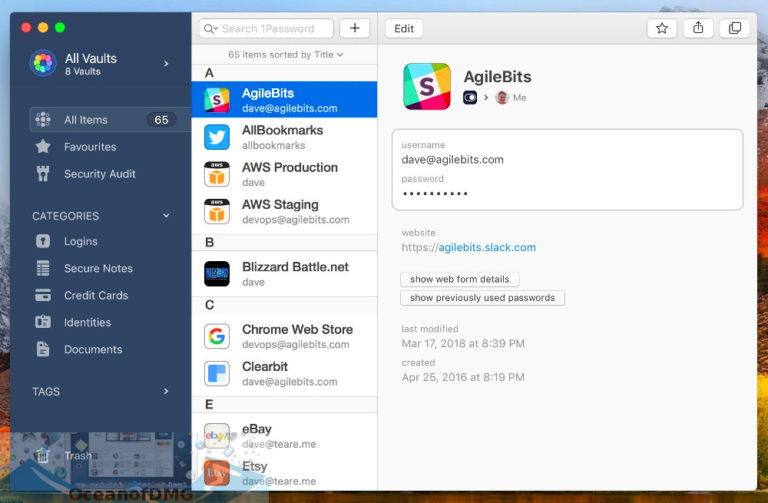


- #1PASSWORD FOR MAC I HAVE THE LICENSE FOR FREE#
- #1PASSWORD FOR MAC I HAVE THE LICENSE SOFTWARE#
- #1PASSWORD FOR MAC I HAVE THE LICENSE PASSWORD#
- #1PASSWORD FOR MAC I HAVE THE LICENSE LICENSE#
Today, 1Password’s biggest existential risk is the inevitable future of passwordless authentication, most prominently via Touch/Face ID on iPhones-passwords themselves could become obsolete like files did for Dropbox.From SSO and 2FA to secret delivery at runtime, 1Password can make itself much harder to tear out-and charge far more-by expanding into these kinds of specific, enterprise use cases. 1Password’s opportunity is to “colonize” the HR, IT, finance and engineering departments with workflow products they can mark up from $8 per seat to the $40 per seat of a DocuSign.
#1PASSWORD FOR MAC I HAVE THE LICENSE SOFTWARE#
Additionally, integrations with Splunk and Elastic allow security and IT teams to send 1Password events into their other systems to get better visibility over how employees are using different software systems.
#1PASSWORD FOR MAC I HAVE THE LICENSE FOR FREE#
You can put a credit card number into 1Password for your team to use, but you lose the audit trail that you get for free using a tool like Ramp.
#1PASSWORD FOR MAC I HAVE THE LICENSE PASSWORD#
Chrome and Safari’s in-built password managers make their browsers stickier and reduce their users’ need for external password managers like 1Password. In the consumer/prosumer workflow, 1Password faces growing competition from Google-and Chrome’s in-built password manager-and Apple, which offer unique password generation and management that works across Safari, iOS and Mac via iCloud Keychain.Creating a new password every time you visit a new site is inconvenient and reduces usage compared to apps that can automatically ingest new secrets and deploy them when appropriate. As single-player password storage became commoditized-see LastPass ($200M revenue in 2021), Dashlane ($500M), and Bitwarden (raised $100M)-the fight became about integrating your passwords into different kinds of workflows and making sharing as easy as possible.The standard practice went from having “1 password for everything” to having an arbitrary number of passwords for all the apps/services you use, none of which you actually know and which you rely on a password manager to remember for you. 1Password’s early growth and stickiness was driven by the proliferation of SaaS apps increasing the number of logins to maintain and an increased number of high-profile password breaches.Browser plug-ins for Chrome and Safari automatically pull up the right password for the app you’re using, and generate new unique passwords (and store them) on your first visit. 1Password found product-market fit doing for secrets (passwords, credit cards, etc) what Dropbox did for files-making it easy to quickly create, store, and share them with your friends, family, and colleagues.
#1PASSWORD FOR MAC I HAVE THE LICENSE LICENSE#
1Password started out as a Mac app that was sold on a perpetual license model, but shifted to a SaaS model around 2017, charging $2.99 per month for individuals. Founded in Canada, 1Password went from $60M ARR in 2019 to $150M by the end of 2021-they’re expected to surpass $200M ARR by the end of 2022, growing 33% YoY.


 0 kommentar(er)
0 kommentar(er)
